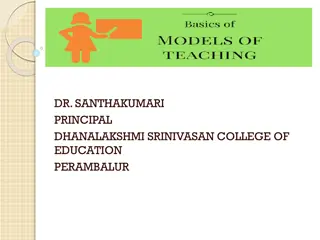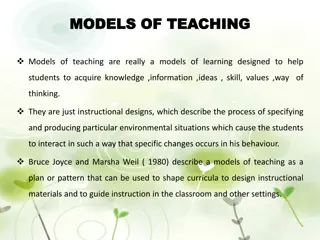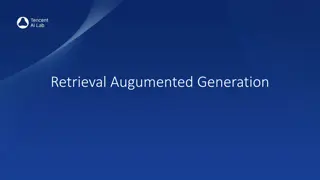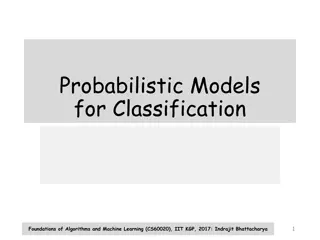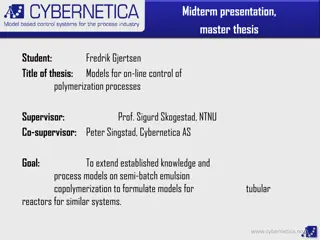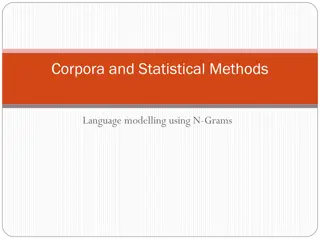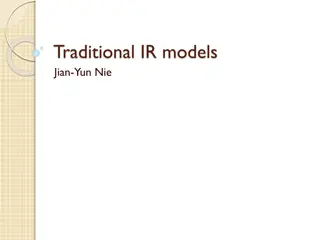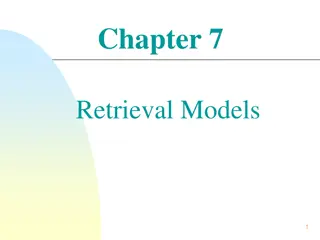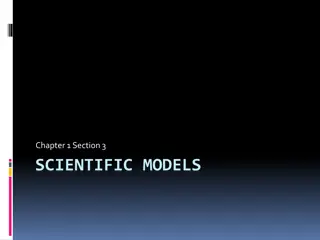
Understanding UML Class Diagrams and Interpretation
Learn about UML class diagrams, including how to read them, discover objects and associations, and interpret example diagrams for online shops. Understand the relationships between customers, orders, products, and employees in a software system.
Download Presentation

Please find below an Image/Link to download the presentation.
The content on the website is provided AS IS for your information and personal use only. It may not be sold, licensed, or shared on other websites without obtaining consent from the author. If you encounter any issues during the download, it is possible that the publisher has removed the file from their server.
You are allowed to download the files provided on this website for personal or commercial use, subject to the condition that they are used lawfully. All files are the property of their respective owners.
The content on the website is provided AS IS for your information and personal use only. It may not be sold, licensed, or shared on other websites without obtaining consent from the author.
E N D
Presentation Transcript
Class models Software Requirements and Design CITS4401 Week 5 Lectures 9 and 10 Department of Computer Science & Software Engineering CITS4401 Software Requirements & Design | 1
Key Topics this week 1. UML Class diagrams (what they are for and how to read them) 2. Discovering objects (noun discovery method) 3. Discovering associations (Class, Responsibilities, Collaboration (CRC) method) Department of Computer Science & Software Engineering CITS4401 Software Requirements & Design | 2
1. UML Class diagrams In this section we will learn how to READ and understand a UML class diagram Department of Computer Science & Software Engineering CITS4401 Software Requirements & Design | 3
UML class diagram for an online shop (Example 1) 1 * Order Customer 1 * CorporateCustomer PersonalCustomer OrderLine * * 0..1 1 Employee Product Department of Computer Science & Software Engineering CITS4401 Software Requirements & Design | 4
UML Class diagram interpretation 1 customer has 0 or more orders, but each order has a single customer An order comprises one or more order lines Many order lines refer to a product Corporate customer and personal customer are special types of customer A corporate customer is supported by 0 or 1 sales reps who are order company employees that is they may have a sales rep or may not Department of Computer Science & Software Engineering CITS4401 Software Requirements & Design | 5
Example 1 with more detail Source: Fowler, UML Distilled, Figure 3.1 https://learning.oreilly.com/library/view/uml-distilled-a/0321193687 Department of Computer Science & Software Engineering CITS4401 Software Requirements & Design | 6
Example 2 Class Multiplicity Association SimpleWatch 1 1 1 1 1 2 1 2 PushButton state push() release() LCDDisplay Battery load() Time now() blinkIdx blinkSeconds() blinkMinutes() blinkHours() stopBlinking() referesh() Attributes Operations Class diagrams represent the structure of the system Department of Computer Science & Software Engineering CITS4401 Software Requirements & Design | 7
classes classes, associations, attributes, generalization, and constraints Department of Computer Science & Software Engineering CITS4401 Software Requirements & Design | 8
Class Diagrams TariffSchedule Trip is_calculated_from zone:Zone price:Price Enumeration getZones() Price getPrice(Zone) Class diagrams represent the structure of the system. Class diagrams are used during requirements analysis to model problem domain concepts during system design to model subsystems and interfaces during object design to model classes. Department of Computer Science & Software Engineering CITS4401 Software Requirements & Design | 9
Classes TariffSchedule Table zone2price Enumeration getZones() Price getPrice(Zone) Name TariffSchedule Signature Attributes zone2price getZones() getPrice() TariffSchedule Operations A class represent a concept. A class encapsulates state (attributes) and behavior (operations). Each attribute has a type. Each operation has a signature. The class name is the only mandatory information. Department of Computer Science & Software Engineering CITS4401 Software Requirements & Design | 10
associations classes, associations, attributes, generalization, and constraints Department of Computer Science & Software Engineering CITS4401 Software Requirements & Design | 11
Associations TariffSchedule TripLeg price zone 1..* 1..* Enumeration getZones() Price getPrice(Zone) Associations denote relationships between classes A is associated with B is: A has to know about B The multiplicity of an association end denotes how many objects the source object can legitimately reference. Department of Computer Science & Software Engineering CITS4401 Software Requirements & Design | 12
1-to-1 and 1-to-Many Associations Has-capital Country City 1 1 name:String name:String 1-to-1 association Polygon Point 1..* 1 x:Integer y:Integer draw() 1-to-many association Department of Computer Science & Software Engineering CITS4401 Software Requirements & Design | 13
Multiplicity (cont) The multiplicity of a property is an indication of how many objects may fill the property. The most common multiplicities you will see are 1 0..1 * (An order must have exactly one customer.) (A corporate customer may or may not have a single sales rep.) (A customer need not place an Order; there is no upper limit to the number of Orders. That is, zero or more orders.) If I have a multivalued property, I prefer to use a plural form for its name. Department of Computer Science & Software Engineering CITS4401 Software Requirements & Design | 14
Multiplicity (cont) In attributes, you come across various terms that refer to the multiplicity. Optional implies a lower bound of 0. Mandatory implies a lower bound of 1 or possibly more. Single-valued implies an upper bound of 1. Multivalued implies an upper bound of more than 1: usually *. Department of Computer Science & Software Engineering CITS4401 Software Requirements & Design | 15
Practice example: Multiplicities Source: Fowler, UML Distilled, Figure 3.1 https://learning.oreilly.com/library/view/uml-distilled-a/0321193687 Department of Computer Science & Software Engineering CITS4401 Software Requirements & Design | 16
attributes classes, associations, attributes, generalization, and constraints Department of Computer Science & Software Engineering CITS4401 Software Requirements & Design | 17
Attributes Properties represent structural features of a class. As a first approximation, you can think of properties as corresponding to fields in a class The attribute notation describes a property as a line of text within the class box itself. Properties are a single concept, but they appear in two quite distinct notations: attributes and associations. Although they look quite different on a diagram, they are really the same thing. Department of Computer Science & Software Engineering CITS4401 Software Requirements & Design | 18
Attributes or Associations Source: Fowler, UML Distilled https://learning.oreilly.com/library/view/uml-distilled-a/0321193687 Department of Computer Science & Software Engineering CITS4401 Software Requirements & Design | 19
Which to use? [Fowler] With two notations for the same thing, the obvious question is, Why should you use one or the other? In general, I tend to use attributes for small things, such as dates or Booleans in general, value types (page 73) and associations for more significant classes, such as customers and orders. I also tend to prefer to use class boxes for classes that are significant for the diagram, which leads to using associations, and attributes for things less important for that diagram. The choice is much more about emphasis than about any underlying meaning. Department of Computer Science & Software Engineering CITS4401 Software Requirements & Design | 20
Programming Interpretation As with anything else in the UML, there s no one way to interpret properties in code. The most common software representation is that of a field or property of your programming language. So the Order Line class from Figure 3.1 would correspond to something like the following in Java: public class OrderLine... private int quantity; private Money price; private Order order; private Product product If an attribute is multivalued, this implies that the data concerned is a collection (ArrayList etc in Java) Department of Computer Science & Software Engineering CITS4401 Software Requirements & Design | 21
generalization classes, associations, attributes, generalization, and constraints Department of Computer Science & Software Engineering CITS4401 Software Requirements & Design | 22
What is generalization? A typical example of generalization involves the personal and corporate customers of a business. They have differences but also many similarities. The similarities can be placed in a general Customer class (the supertype), Personal Customer and Corporate Customer are subtypes. Department of Computer Science & Software Engineering CITS4401 Software Requirements & Design | 23
Generalization Button CancelButton ZoneButton Generalization relationships denote inheritance between classes. The children classes inherit the attributes and operations of the parent class. Generalization simplifies the model by eliminating redundancy. Department of Computer Science & Software Engineering CITS4401 Software Requirements & Design | 24
constraints classes, associations, attributes, generalization, and constraints Department of Computer Science & Software Engineering CITS4401 Software Requirements & Design | 25
Constraints UML class diagrams indicate constraints via association, attributes and generalizations But other types of constraints may also need to be capture UML allows you to use anything to describe constraints The only rule is you put them inside curly braces {} Natural or formal language can be used to describe the constraint Department of Computer Science & Software Engineering CITS4401 Software Requirements & Design | 26
2. Discovering objects and associations Now we know how to READ UML class models, we ll look at how to discover classes and associations from problem descriptions. Then you ll be able to WRITE UML class models. Department of Computer Science & Software Engineering CITS4401 Software Requirements & Design | 27
OOP concept Department of Computer Science & Software Engineering CITS4401 Software Requirements & Design | 28
Actors, Objects and Classes What is the difference between an actor and a class and an object? Actor: An entity outside the system to be modeled, interacting with the system ( Driver ) Class: An abstraction modeling of an entity in the problem domain, inside the system to be modeled ( Car ) Object: A specific instance of a class ( my white Toyota Corolla hybrid ). Department of Computer Science & Software Engineering CITS4401 Software Requirements & Design | 29
Examples of Class Components Name: employee Attributes: name, address, dateofbirth, employeenum, department, manager, salary, status, taxcode Operations: join, leave, retire, changedetails Department of Computer Science & Software Engineering CITS4401 Software Requirements & Design | 30
Video References Barnes and Kolling, Objects First with Java Chapter 1: VN 1.1 Introduction to key concepts (in object oriented design) https://www.youtube.com/watch?v=CPUaTT0Xoo4&t=7s Chapter 13: VN 13.1 Using the noun-verb method for application design https://www.youtube.com/watch?v=sbQqb_XXOK8 Department of Computer Science & Software Engineering CITS4401 Software Requirements & Design | 31
Noun-Verb Method In a problem description NOUNS may represent Objects and Attributes VERBS may represent operations or services The noun-verb method throws up noise So it needs to be used alongside other methods Department of Computer Science & Software Engineering CITS4401 Software Requirements & Design | 32
Heuristics Heuristics for Mapping parts of speech to model components Source Abbot 1983 quoted in Bruegge and Dutoit Object-Oriented SW Eng Part of Speech Proper noun Common noun Doing verb Being verb Having verb Modal verb Adjective Model component Instance Class Operation Inheritance Aggregation Constraints Attribute Examples Alice Field officer Creates, submits, selects Is a kind of Has, includes Must be Incident description Department of Computer Science & Software Engineering CITS4401 Software Requirements & Design | 33
Case Study: Cinema booking system The cinema booking system should store seat bookings for multiple theatres. Each theatre has seats arranged in rows. Customers can reserve seats and are given a row number and a seat number. They may request bookings of several adjoining seats. Each booking is for a particular show (that is a screening of a given movie at a certain time). Shows are at an assigned date and time and are scheduled for a theatre where they are screened. The system stores the customer s telephone number. Reference Barnes and Kolling Objects First Chapter 15 Video Notes: VN 13.1 Using the noun-verb method for application design Department of Computer Science & Software Engineering CITS4401 Software Requirements & Design | 34
Cinema Booking System Nouns = potential classes Customer Movie Booking Theatre Show Seat Date Time row seatnumber Department of Computer Science & Software Engineering CITS4401 Software Requirements & Design | 35
Cinema Booking System Verbs = potential associations Customer Movie Booking stores (seat booking) has (seats) reserves (seats) Is given (row and seat number) Requests (seat booking) is scheduled (in theatre) Theatre Show Seat Date Time row seatnumber Department of Computer Science & Software Engineering CITS4401 Software Requirements & Design | 36
Class-Responsibility-Collaborator Model the class name of an object creates a vocabulary for discussing a design responsibilities of an object identify problems to be solved a handful of short verb phrases, each containing an active verb collaborators of an object are other objects which will send or be sent messages in the context of satisfying responsibilities CRC cards are a brainstorming tool for OO design Recommended for Extreme Programming XP methodology Department of Computer Science & Software Engineering CITS4401 Software Requirements & Design | 37
CRC Example class name collaborators responsibilities Department of Computer Science & Software Engineering CITS4401 Software Requirements & Design | 38
Cinema Booking Scenario CRC Alice selects the movie Star Wars at the Apollo Theatre She requests the 8pm showing on 24 March 2020 The booking system sends the request to Apollo Alice is allocated seat R18 Theatre Receives booking request Customer, Show Customer Selects theatre, movie and show date and time Receives tickets Show Allocates tickets Customer, Show Theatre Department of Computer Science & Software Engineering CITS4401 Software Requirements & Design | 39
Cinema Booking System UML class diagram (version 0) 1 Customer * Booking PhoneNum 1 1 1 1 Seat row seatnumber 1 1..* Movie DateTime Theatre This is a model in progress Ideas and changes welcome BookingSystem (could store a collection of shows to book) Department of Computer Science & Software Engineering CITS4401 Software Requirements & Design | 40
Summary 1. UML Class diagrams (what they are for and how to read them) 2. Discovering objects (noun discovery method) 3. Discovering associations (Class, Responsibilities, Collaboration (CRC) method) Department of Computer Science & Software Engineering CITS4401 Software Requirements & Design | 41
Requirements Analysis Framework Requirements analysis results in an analysis model of 3 parts functional model: use cases & scenarios static analysis object model: class & object diagrams dynamic model: statechart & sequence diagrams (later in the unit) This week we will look at static class models Aim to investigate the problem domain as far as possible before moving to the solution domain (for design & implementation) Department of Computer Science & Software Engineering CITS4401 Software Requirements & Design | 42
UML class diagrams UML Class Diagrams describe the static structure of the system classes, class attributes, associations between classes, association roles and multiplicity classes: features and facts about the problem domain which matter in the system we are building to support it Reference: UML Distilled by Martin Fowler, Chapter 3 Department of Computer Science & Software Engineering CITS4401 Software Requirements & Design | 43
Our focus Class diagrams are the backbone of the UML, so you will find yourself using them all the time. But the trouble with class diagrams is that they are so rich, they can be overwhelming to use. In CITS4401 we will study these elements: classes, associations, attributes, generalization, and constraints For more detail: see UML Distilled by Martin Fowler, Chapter 3 & 5 And some info on the hidden slides not examinable but for interest Department of Computer Science & Software Engineering CITS4401 Software Requirements & Design | 44
Why build class models? Why do we build class models? In order to 1. Build, as quickly and cheaply as possible, a system which satisfies our current requirements; 2. Build a system which will be easy to maintain and adapt to future requirements Department of Computer Science & Software Engineering CITS4401 Software Requirements & Design | 45
What properties support those objectives? Every piece of behavior which is required of the system must be able to be provided in a sensible way, by objects of the classes we choose in the model A good class model consists (as far as possible) of classes which represent enduring classes of domain objects, which don t depend on the particular functionality required today. Department of Computer Science & Software Engineering CITS4401 Software Requirements & Design | 46
When to Use Class Diagrams [Martin Fowler] Class diagrams are the backbone of the UML, so you will find yourself using them all the time. The trouble with class diagrams is that they are so rich, they can be overwhelming to use. Here are a few tips. Don t try to use all the notations available to you. Start with the simple stuff: classes, associations, attributes, generalization, and constraints. Introduce other notations only when you need them. I ve found conceptual class diagrams very useful in exploring the language of a business. For this to work, you have to work hard on keeping software out of the discussion and keeping the notation very simple. Department of Computer Science & Software Engineering CITS4401 Software Requirements & Design | 47
When to use (2) Don t draw models for everything; instead, concentrate on the key areas. It is better to have a few diagrams that you use and keep up to date than to have many forgotten, obsolete models. The biggest danger with class diagrams is that you can focus exclusively on structure and ignore behavior. Therefore, when drawing class diagrams to understand software, always do them in conjunction with some form of behavioral technique. If you re going well, you ll find yourself swapping between the techniques frequently. Department of Computer Science & Software Engineering CITS4401 Software Requirements & Design | 48
B&D Heuristics for Identifying Objects For each scenario or use case, try to identify objects Entity Objects: persistent data Boundary Objects: interaction between actors and system Control Objects: tasks performed by users and supported by the system Department of Computer Science & Software Engineering CITS4401 Software Requirements & Design | 49
Heuristics to Identify ENTITY objects terms that developers or users need to clarify in order to understand the use case e.g. ReportEmergency recurring nouns in the use cases e.g. Incident real-world entities the system needs to track e.g. FieldOfficer, Dispatcher, Resources real-world activities the system needs to track e.g. EmergencyOperationPlan data sources or sinks e.g. Database, Printer always use the user s terms for entity objects Department of Computer Science & Software Engineering CITS4401 Software Requirements & Design | 50






